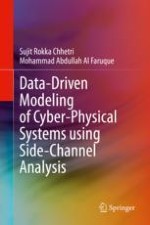2020 | OriginalPaper | Chapter
4. Data-Driven Defense Through Leakage Minimization
Authors : Sujit Rokka Chhetri, Mohammad Abdullah Al Faruque
Published in: Data-Driven Modeling of Cyber-Physical Systems using Side-Channel Analysis
Publisher: Springer International Publishing
Activate our intelligent search to find suitable subject content or patents.
Select sections of text to find matching patents with Artificial Intelligence. powered by
Select sections of text to find additional relevant content using AI-assisted search. powered by
